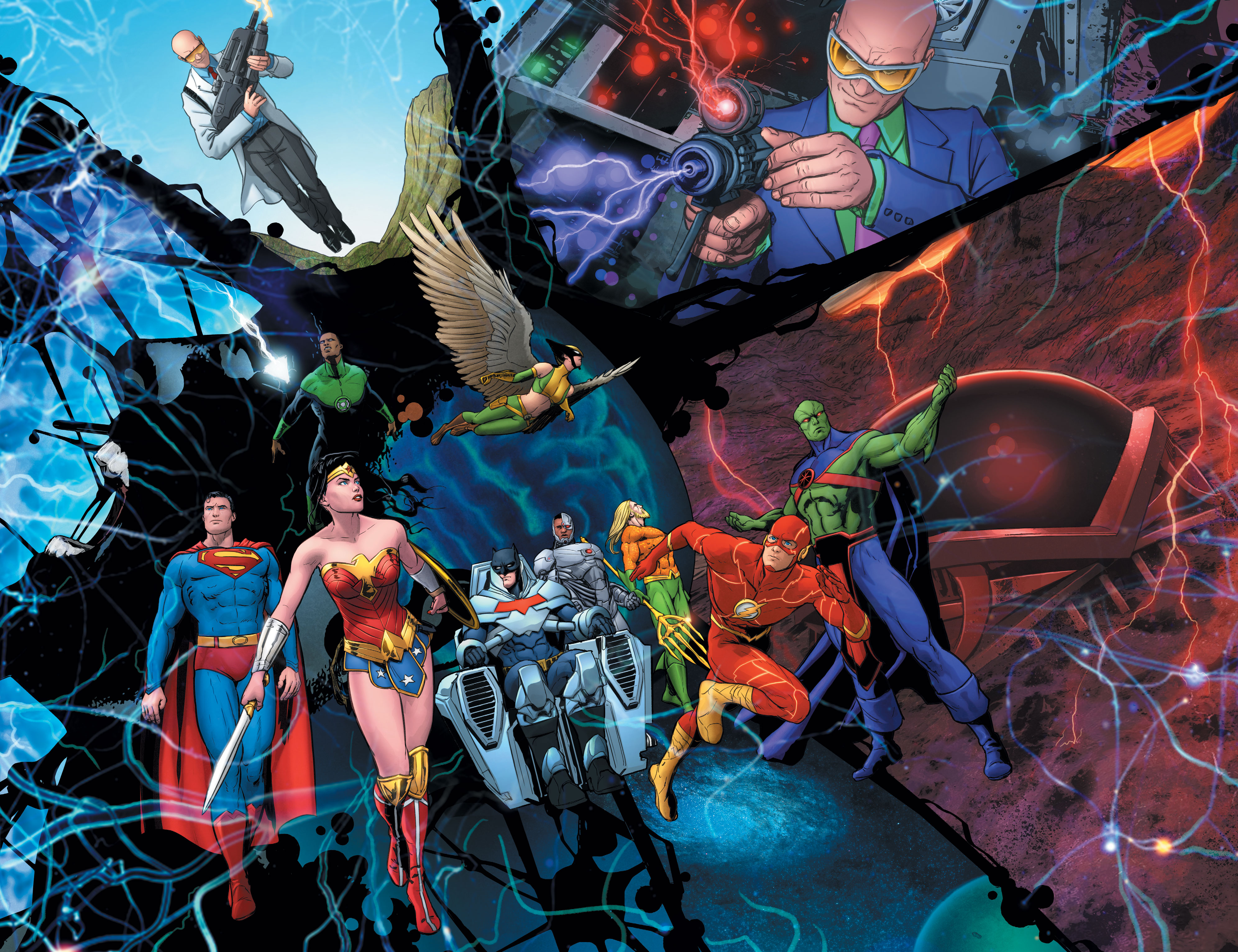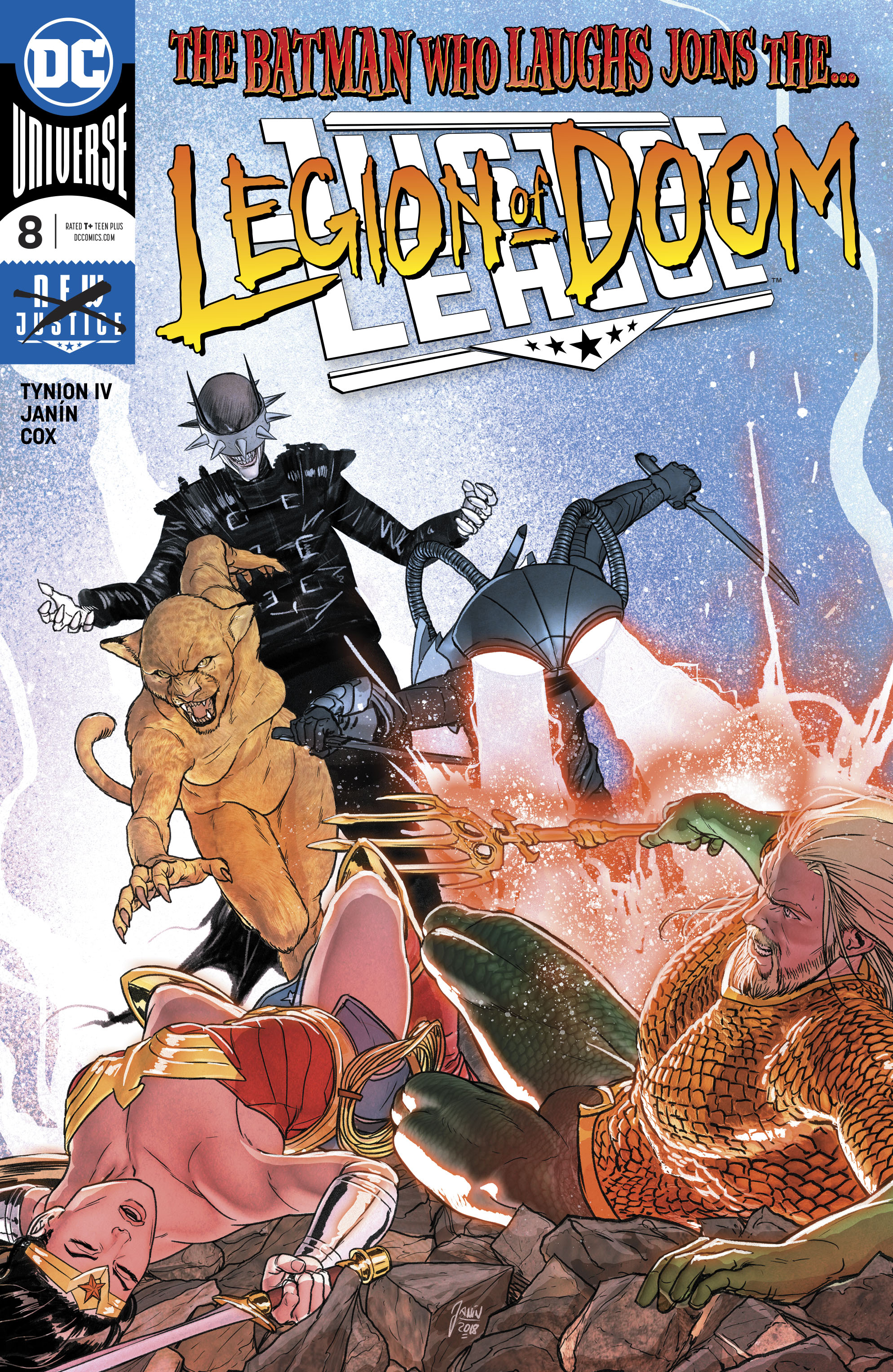Justice League, The Legion of Doom, and the Nature of Evil in the DC Universe
Justice League continues to rewrite the laws of the DC Universe and explores the reason behind the Legion of Doom's existence.
The general logic goes that Justice League is the flagship title of the DC Universe. When you’ve united some of the most recognizable and powerful superheroes in the world under one banner, it isn’t to tell small stories. As Justice League goes, so goes the DC Universe. Or at least that’s how it should be.
But over the last few years, no matter how big the story (and they’ve all been big), Justice League has felt fairly self contained, with its tales rarely impacting the rest of the DCU. That isn’t to say it hasn’t been good, as the book wrapped its previous volume with a terrific run by Christopher Priest and Pete Woods, for example. But under the stewardship of Scott Snyder, James Tynion IV, and a host of killer artists, Justice League is currently changing the very fabric of the DC Universe, introducing wild new concepts about the nature of powers and how things work by the handful each issue.
“It’s really refreshing,” James Tynion IV says. “Everything building up to the current place of Justice League books and where we wanted to go, like the Source Wall breaking down, operates kind of on two levels. For one, it set a little story in motion for what we’re doing for this Justice League. On a story level it was also meant to represent that we wanted to take all of the rules of the DC Universe and literally tear the wall open and make it so everything that you felt was a complete tapestry, you suddenly realize you’re only seeing a piece of it. We wanted all of the characters to be faced with not understanding the entirety of their mythology.”

That’s pretty heady stuff, but there’s a more basic reason for the scale of the stories, too. “We also just wanted these books to be incredibly fun,” he admits.
And just as Justice League has an eye on the future of the DC Universe with all its new revelations, it grounds it with a nod to the past. The book prominently features the rise of the Legion of Doom, the supervillain team first introduced on the Challenge of the Super Friends animated series in 1978. Made up of the most recognizable baddies in all of comics, led by Lex Luthor, and housed in one of the coolest headquarters imaginable, the Legion of Doom could have been used as a way to use nostalgia to lure fans in. Instead, they’re being used to illustrate just what heroes and villains stand for in the DC Universe.
further reading: Justice League and the Return of Starman to the DC Universe
“I’m loving writing Lex Luthor in these issues because this is a bit more of the Silver Age, mad scientist Luthor, than we’ve seen in a while,” Tynion says. “Honestly, that’s one of my favorite iterations of the character. Getting him back to that point where he’s still driven by all of the same things, but now it’s just the lengths he’ll go to pursue what he wants are limitless. It’s just really, really fun to write.”
Tynion, who admits that Luthor is a favorite villain of his, has spent some time considering what drives Luthor to be the best, or worst, he can be.
“Luthor is that voice inside of all of us that’s angry that anything anywhere can be better than you,” Tynion says. “For Luthor, you know, he is supposed to be the pinnacle of man and the fact that there’s something above him is the most infuriating thing in the world. I think we can all tap into a bit of that fury. Either that or I just revealed something very telling about myself.”
Back in Justice League #5, Luthor caught a glimpse of a future where humanity had venerated Lex and other villains, rather than heroes. “Society stopped fooling itself,” a young man dressed as the Joker and wearing Luthor-inspired power armor told Lex. Lex was so inspired that he formed the Legion of Doom, with a mission statement that it would “not stand for the people as they should be, but as they were, and would always be.” It’s not just a great exploration of what motivates Luthor, it’s perhaps the best distinction between what the heroes and villains of the DC Universe stand for.
“It’s something that I talked about a lot with Scott [Snyder],” Tynion says. “In nature, there is no such thing as justice. Justice is not an actual thing that exists. It’s something that you aspire to. It’s a dream that is sort of enforced upon a universe to try to make it better. What Luthor is saying is that, ‘we don’t need to enforce something better on us. We need to respect what we are and become the best at that.'”

Luthor would certainly know, as he spent time as a hero, and even a member of the Justice League. “Luthor feels that he wasted, you know it’s comic book time, so who knows how long it actually was, but a few years of comic publishing time where he was acting as the hero,” Tynion says. “He got swept up in trying to pursue this dream version, rather that just accepting all of his worst instincts and being the best version of that version of himself.”
When the Legion of Doom were first created, it was an assortment of villains that could be paired off against the specific heroes in the Justice League. But while this Legion contains many of the same members, it isn’t as simple as using a hero’s biggest villain to counter their traditional foe in the League. And there are more members coming.
further reading: DC Universe Streaming Service Review
“Luthor is the central figure through the Legion of Doom story, but Martian Manhunter, more than anyone, is the central driver of the larger Justice League meta-story,” Tynion says. “Pitting the two of them together, is interesting because there are still a lot of the same pathos as Luthor versus Superman, but it’s a different angle. We wanted the Legion of Doom to be the biggest villains in the DC Universe. That said, this issue reveals that there are still some secrets in the Legion of Doom and some players who Luthor might be using who we haven’t seen just yet…as we move into the next year, we’re going to see the ideological battle between the Justice League and the Legion of Doom spill out into the world around them.”
Justice League #8 arrives on September 19. We’ll have more from James Tynion IV about the book later this week!
Mike Cecchini is the Editor in Chief of Den of Geek. You can read more of his work here. Follow him on Twitter @wayoutstuff.
